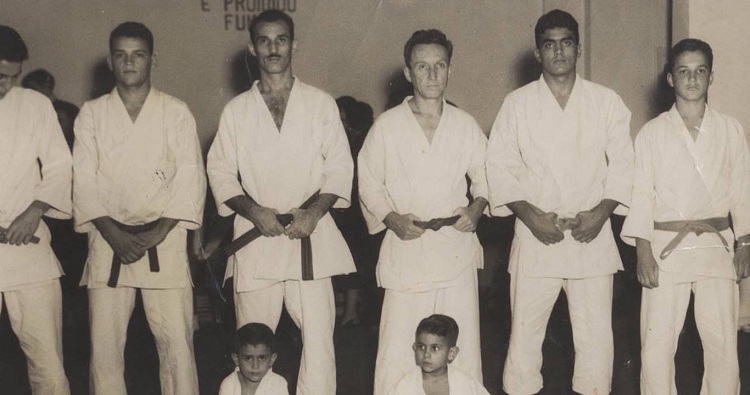In 1914, Esai Maeda, also known as “Count Koma,” arrived in Brazil to establish a Japanese immigration colony. Maeda was aided in his quest by a Brazilian scholar of Scottish heritage, Gastao Gracie. Maeda was no ordinary immigrant; he was a direct pupil of the founder of Judo, Jigaro Kano. Further, Maeda was a master of both Judo and Japanese Jiu-Jitsu.
To repay Gastao’s kindness, Maeda taught Gastao’s oldest son, Carlos, the arts of Judo and Jiu-Jitsu. In turn, Carlos then taught the art to three of his four brothers: Oswaldo, Gastao, and George. And in 1925, the first Gracie Brazilian Jiu-Jitsu Academy was opened in Rio de Janeiro.
The fourth brother, Helio, was a frail young man, weighing only 135 pounds. Therefore, he was not included in the original instruction. However, he watched attentively from the side of the mat. One day when the other brothers failed to show up to teach class, Helio provided instruction based on his modified versions of the Jiu-Jitsu techniques. Helio focused on using leverage, rather than strength, to apply the techniques.
The concept of techniques based on leverage, not strength, became the essential principle of Brazilian Jiu-Jitsu, or BJJ. To prove the effectiveness of their art, the Gracies followed in the tradition of Maeda and provided an open challenge to anyone who doubted the applicability of BJJ in a real fight. These challenges, known as “Vale Tudo” (Portuguese for “anything goes”) matches, manifested themselves in a manner of combat that is the precursor to today’s MMA.
GRANDMASTER HELIO GRACIE



Leave A Comment